At some point in your life, you’ve probably wondered what mulch’s deal is. It seems to be everywhere, and yes, it does tend to make gardens and lawns where it is used look nicer with its contrasting colors, but there has to be another reason for it, right? Perhaps you’ve guessed that it helps plants grow, or maybe it really is only used for its aesthetic appeal. As you may have guessed, mulch is very important, especially when it comes to trees and shrubs, although all plants benefit from it due to its many functions. If you’ve never added mulch to your garden or lawn, then let the professionals at the Parke Company guide you into a healthier plant life.
What to Know About Mulching
Mulch: What is it?
At its most base form, mulch refers to any number of organic or inorganic materials spread around plants, primarily trees. It is mostly used because of the enormous impact it has on the soil; plants that have mulch tend to grow much faster and better than plants left to fend for themselves. The reason is that mulch locks in moisture by creating a barrier between the sun’s rays and the surface of the soil, so water cannot evaporate as quickly as it normally would. Mulch also helps to improve the fertility of the soil. Additionally, it defends the plants by cutting down on the amount of weeds that are capable of growing in the vicinity, so they are not there to choke the young plants out. One way to get the most out of the mulching process is to add some manure in with the organic materials like wood chips. Nature’s little helpers – worms – will do the rest, working the nutrients into the soil naturally.
Another positive benefit from mulching is the way it can be used to get rid of unwanted ground-level plants. By spreading a layer of the powerful material on the offending plants, an environmentally-friendly solution to the problem is found without resorting to the harmful use of chemicals such as pesticides, or the backbreaking work that it would take to pluck the plants manually.
Putting it into Practice
Now that you know a little about why you should use mulch, the next step is implementing it. As previously mentioned, there are many types of mulch that can be used, including the traditional wood chips, compost, old leaves, and other, more easily found and cheaper options, like rubber bits, cardboard, and newspaper, although the latter is best used as a base. Next, a circle around the tree somewhere between 3½ to 4½ inches deep is needed near the base of the plant. It is very important that you do not choke the base of the plant with the mulch, since doing so can lead to pest infestations and disease growth opportunities.
There are so many positives to including mulch that it would be silly not to, from the way it locks in moisture to its part in protecting the plants it surrounds. That being said, there can be a lot of difficult work that goes into incorporating mulch in your life, which is why it’s a good idea to let us at the Parke Company handle it.
